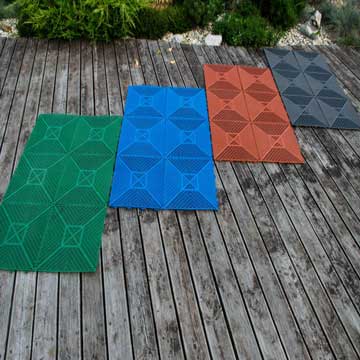Eco-Friendly Floors: Sustainable Solutions for Stylish Living

Eco-Friendly Living: Navigating Sustainable Flooring Solutions
Sustainability has become a key consideration in home design, with many homeowners seeking eco-friendly alternatives for their flooring. Embracing sustainable flooring solutions not only contributes to environmental conservation but also creates a healthier living space. Let’s delve into some eco-conscious options that align with the principles of sustainable living.
1. Bamboo Flooring: A Rapidly Renewable Resource
Bamboo, known for its rapid growth, has become a popular choice for sustainable flooring. Bamboo flooring provides a natural and elegant look while being an eco-friendly alternative to traditional hardwood. Its quick regeneration makes it a rapidly renewable resource, reducing the environmental impact associated with flooring materials.
2. Cork Flooring: Harvested Without Harming Trees
Cork flooring is derived from the bark of cork oak trees, which naturally regenerate after harvesting. This sustainable option does not involve cutting down the trees, making it an environmentally responsible choice. Cork flooring is not only resilient and comfortable but also offers excellent insulation properties, contributing to energy efficiency.
Explore Sustainable Flooring Solutions at Lucas Barrios
Discover a curated selection of sustainable flooring solutions at Lucas Barrios. Their collection emphasizes eco-friendly options that align with a commitment to sustainable living.
3. Reclaimed Wood: Reducing Demand on Forests
Opting for reclaimed wood flooring contributes to the conservation of forests by repurposing wood from existing structures. This sustainable approach reduces the demand for new timber and minimizes the environmental impact associated with logging. Reclaimed wood floors carry a unique charm, with each plank telling a story of its past use.
4. Recycled Metal Tiles: Industrial Chic with a Green Twist
For those seeking an unconventional yet sustainable flooring option, recycled metal tiles offer an industrial chic aesthetic with an eco-friendly twist. These tiles are often made from recycled materials, such as reclaimed metal or aluminum. Not only do they bring a unique visual appeal to spaces, but they also divert materials from landfills.
5. Linoleum Flooring: Natural and Biodegradable
Linoleum, made from natural materials like linseed oil, cork dust, and wood flour, is a sustainable and biodegradable flooring option. Linoleum is resilient, easy to maintain, and has anti-bacterial properties. Its production involves fewer environmental pollutants compared to some conventional flooring materials, making it a green choice for eco-conscious homeowners.
6. Recycled Glass Tiles: Colorful and Sustainable
Incorporating recycled glass tiles into your flooring design adds a vibrant and sustainable element to your home. These tiles are often made from post-consumer glass, diverting waste from landfills. The manufacturing process consumes less energy compared to producing new glass, contributing to a reduced carbon footprint.
7. Wool Carpeting: Natural, Renewable, and Biodegradable
Wool carpeting is a sustainable choice for those seeking comfort and warmth underfoot. Wool is a natural, renewable resource, and the biodegradable properties of wool make it an environmentally friendly flooring option. Additionally, wool carpets are known for their durability, reducing the need for frequent replacements.
8. Sustainable Ceramic Tiles: Eco-Conscious Elegance
Ceramic tiles, when sourced from eco-conscious manufacturers, can be a sustainable flooring option. Look for tiles made from recycled materials or produced using environmentally friendly manufacturing processes. Sustainable ceramic tiles offer both elegance and peace of mind for those prioritizing the planet.
9. Hemp Flooring: Fast-Growing and Eco-Friendly
Hemp, a fast-growing plant, has gained popularity as an eco-friendly flooring material. Hemp flooring is not only durable but also resistant to mold and mildew. Its rapid growth cycle makes it a sustainable choice, requiring fewer resources compared to other flooring materials.
10. Marmoleum: Versatile and Biodegradable
Marmoleum, a type of linoleum, is a versatile and biodegradable flooring option. Made from natural ingredients like linseed oil, wood flour, and jute, Marmoleum is free from harmful chemicals. Its eco-friendly composition, combined with a wide range of colors and patterns, makes it a stylish and sustainable flooring choice.
In conclusion, choosing sustainable flooring solutions is a proactive step towards creating a greener and healthier living environment. From bamboo and cork to reclaimed wood and recycled glass, the options are diverse and stylish. Explore the sustainable flooring collection at Lucas Barrios to embark on a journey towards a more eco-conscious home.


